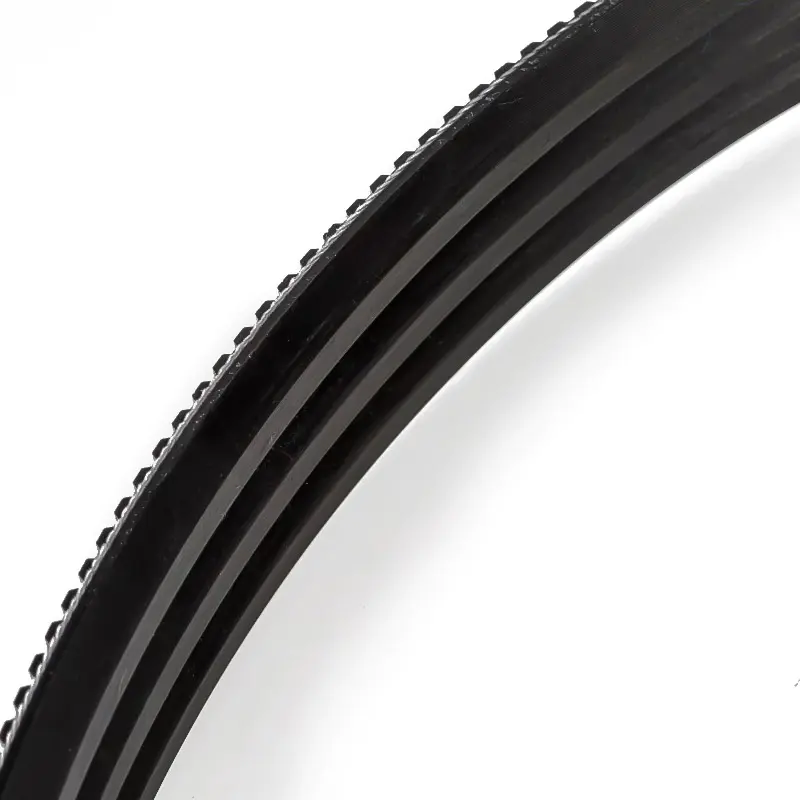Summary:Environmental conditions, particularly temperature and humidity, can significantly impact the performance of industrial transmission belts. Here's a breakdown of their effects:
High Temperatures:
Belt Material Deterioration: Elevated temperatures imp......
Environmental conditions, particularly temperature and humidity, can significantly impact the performance of industrial transmission belts. Here's a breakdown of their effects:
High Temperatures:
Belt Material Deterioration: Elevated temperatures impact the molecular structure of belt materials. This thermal stress accelerates the breakdown of polymers and elastomers, leading to a decrease in tensile strength and overall durability.
Thermal Expansion: High temperatures can cause thermal expansion of belt components, affecting critical dimensions. This expansion may lead to misalignment issues, requiring precise tensioning and alignment adjustments for optimal performance.
Low Temperatures:
Belt Stiffness and Brittleness: In frigid conditions, belt materials undergo a transition to a more rigid state. This increased stiffness not only affects flexibility but also raises the risk of belt cracking, particularly during sudden starts or high-impact loading conditions.
Cold Flow: Some belt materials may exhibit cold flow, a phenomenon where prolonged exposure to low temperatures causes gradual deformation over time. This can result in changes to the belt's shape and dimensions, impacting its engagement with pulleys.
Humidity:
Corrosion Risk: High humidity introduces the risk of corrosion, especially for metal components within the belt structure. Corrosion compromises the mechanical integrity of the belt, making it susceptible to premature failure.
Water Absorption: Certain belt materials have hygroscopic properties, absorbing moisture from the air. Water absorption can alter the physical properties of the belt, affecting its tensile strength, flexibility, and overall performance.
Combined Effects:
Thermal Cycling Impact: Rapid and repeated temperature fluctuations can induce thermal cycling stress. This phenomenon leads to a dynamic expansion and contraction of belt components, necessitating sophisticated engineering considerations to minimize the cumulative impact on the belt structure over time.
Fatigue Resistance: The combined effects of temperature and humidity variations can contribute to fatigue failure in belts. Understanding the fatigue resistance of the chosen belt material is crucial for ensuring long-term reliability.
Selection of Suitable Materials:
Heat Dissipation Properties: Beyond mere resistance to high temperatures, selecting belts with efficient heat dissipation properties is essential. This involves considering the thermal conductivity and heat dissipation capabilities of the belt material to prevent localized overheating.
Material Compatibility: Ensuring compatibility between belt materials and environmental conditions involves a comprehensive understanding of how specific polymers, reinforcements, and coatings interact with temperature and humidity variations.
Proactive Maintenance:
In-Depth Inspections: Regular visual inspections should be complemented by more in-depth analyses, including thermal imaging and non-destructive testing techniques. These methods provide a deeper insight into the internal condition of the belt, identifying potential issues that might not be visible on the surface.
Predictive Maintenance: Implementing predictive maintenance strategies, such as monitoring belt vibration, temperature, and acoustic signatures, can enable the prediction of potential failures, allowing for planned interventions before catastrophic issues arise.
Cooling Systems:
Advanced Cooling Techniques: In applications where high temperatures are unavoidable, implementing advanced cooling techniques is essential. This may involve the integration of cooling fins, fluid cooling systems, or even phase-change materials to efficiently dissipate heat from critical belt components.
Enclosures and Seals:
Precision Sealing: Enclosures and precision seals become critical in high-humidity environments. Precision sealing prevents the ingress of moisture and contaminants, safeguarding the internal components of the belt system and preserving its performance over extended periods.
Wide angle V Belt
